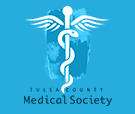Skeletal muscle cramps are one of the most common problems encountered in endurance sports. The specific cause has not been definitively studied. Also, the differences between the rate of muscle cramps in elite and recreational athletes is not known.
There are a variety of medical conditions that cause muscles cramps such as pregnancy induced cramps, night cramps in older patients, rare hereditary conditions, diabetes, electrolyte abnormalities, and muscle diseases. This article will concentrate on exercise-associated muscle cramps (EAMC). The majority of athletes sustaining a muscle cramp have EAMC.
EAMC are painful involuntary spasmodic contractions of skeletal muscles that occur during or immediately after strenuous exercise. The theories on the cause of EAMC are related to dehydration and blood electrolyte levels. A recent hypothesis, however, suggests the problem to be abnormal spinal control of motor neuron activity, especially when a muscle contracts in a shortened position. Such an example is cramping of the calf muscle while the foot is plantar flexed (the muscle is therefore shortened) and the gastrocnemius muscle contracts when one is asleep.
The risk factors of EAMC are older age, higher body mass index, shorter daily stretching time, irregular stretching habits, family history of cramping and high intensity training.
The 2 most important observations of all studies looking at the risk of EAMC are muscle fatigue and poor stretching habits
The initial treatment of the cramping athlete on the field includes:
- Passive stretching of the affected muscle and holding the muscle in a stretched position. The return of the muscle to normal length will not precipitate a cramp.
- Keep the athlete at a comfortable cool temperature and provide water. Sports drinks can be used to replenish glucose and electrolytes. DO NOT USE SALT TABLETS.
- If the athlete is cramping in multiple muscle groups, transportation to the emergency may be required.
Prevention of Exercise Associated Muscle Cramps
Coaches should advise the athlete:
- To be well conditioned (most cramps occur early in the season)
- Regularly stretch muscles prone to cramping
- Maintain adequate nutrition (carbohydrates and fluid)
- Reduce exercise intensity and duration if necessary







